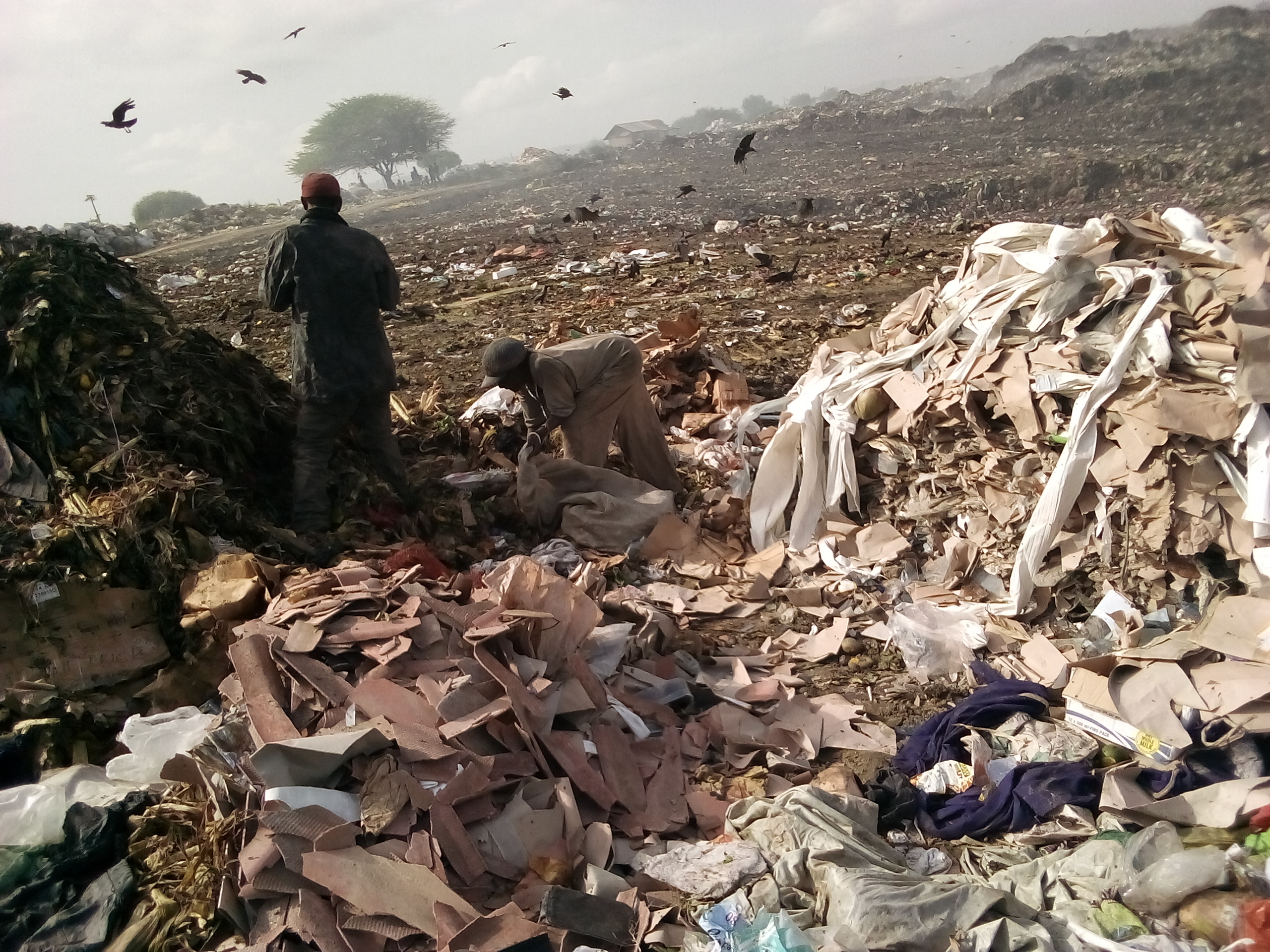Jones Makini (not his real name) and a dozen other children rush onto an oncoming lorry.
They signal the driver to dump the waste next to a heap of garbage and the driver obliges. Once the lorry leaves, Makini, 12, and his friends jump onto the heap of garbage and start scavenging.
They are in search of any food items they could lay their hands on.
Today, he and his friends are very lucky. They have found mangoes most probably from the Kongowea market. But the hygienic state of the mangoes is the least of their concerns. At least not now when they do not have other options available.
An elderly man who is also scavenging in the heap hands him a knife he had safely tucked in his pocket. The boy cuts the mango into two and devours its succulent juice.
I waive to him smiling, signaling to come towards me. He waves back, smiling.
A few meters from where Makini is, I see more children. They too are also scavenging for any leftover food.
Indian house crow birds popularly known as kunguru are circling above wanting a bite of the crumbs.
ALCOHOLIC MOTHER
As I sit down with Makini, he wears a forlorn face, perhaps he is not comfortable talking about his troubled family, but nonetheless he mumbles some incoherent words.
“I want to find food for myself then later find some to take home”, he tells me.
He opens up to me revealing that his mother is an alcoholic. He has three other siblings.
His alcoholic mother lives at a makeshift house in the dumpsite. Makini being the firstborn has to fend for his family who has lived in the dumpsite since he was born.
“I stopped going to school because my mother could not afford to take me to school and feed me,” Makini says.
For him, working in the dumpsite and scavenging for rotten and leftover food is a life and death ritual that he must perform religiously.
Unfortunately, he is not alone. Many children here are busy on the dumpsite.
Menza, one of his friends is busy collecting bottles and any plastic material he can lay his hands on.
He hopes to raise money by selling the bottles. On a good day, Menza can make up to sh. 400. That is 400 bottles collected. Cleaning them for sale is no mean feat.
“By the time I am done for the day, I feel sharp backaches. It’s not easy” he says as he wipes the sweat off his face.
Just like Makini, Menza does not go to school, neither does he see himself leaving the dumpsite anytime soon.
He has to fend for himself.
POVERTY
Such is the life for hundreds of families living in the Mwakirunge dumpsite; the largest dumpsite in the region and one that has always spiraled a debate about the county government’s inability to deal with the waste menace.
According to the charity organization Gap Kenya, there are more than 500 people living on the site, many of whom are women and children.
With hardcore poverty biting, they are forced to eat food that is moldy, rotten and in most cases stinky.
Health experts have argued the dumpsite puts the children under the risk of contracting communicable diseases such as Cholera, Malaria, and Typhoid.
A survey carried out in 2015 indicated that the major diseases reported in the area include malaria (74.7%), diarrhea (56.5%), respiratory/infection (47%), eyes/nose irritation (%)and burns (39.8%.
Unconfirmed reports state that some children have died after consuming contaminated food at the dumpsite.
The report further blamed the high levels of illiteracy which stand at approximately 41% on the existence of the dumpsite and the high levels of poverty in the area.
“Children detour to the dumpsite instead of going to school. The children go to the dumpsite without the parent’s permission. Due to pupils’ absenteeism, school performance has dropped,.Absenteeism is also brought about by sicknesses which arise due to dumpsite e.g bad odor-causing headaches, stomach aches, etc” the report said.
According to the Mombasa County Government, the county generates waste in excess of 1200 tonnes a day with the majority of it ending up in the Mwakirunge site.
RECYCLING PLANT
The dumpsite has increasingly been put under pressure over the past two years due to the closure of the Kibarani dumpsite which was turned into a public park.
In 2015, the county government announced plans to construct a recycling plant in an effort to deal with the waste menace in the county.
With the plans seemingly stalling, the county director of communications Richard Chacha argues that plans to solve the garbage menace in Mwakirunge are still on.
“We expect to have the groundbreaking ceremony for the project by the end of next month” He was quoted by a local daily.
Editing by Janet Murikira













